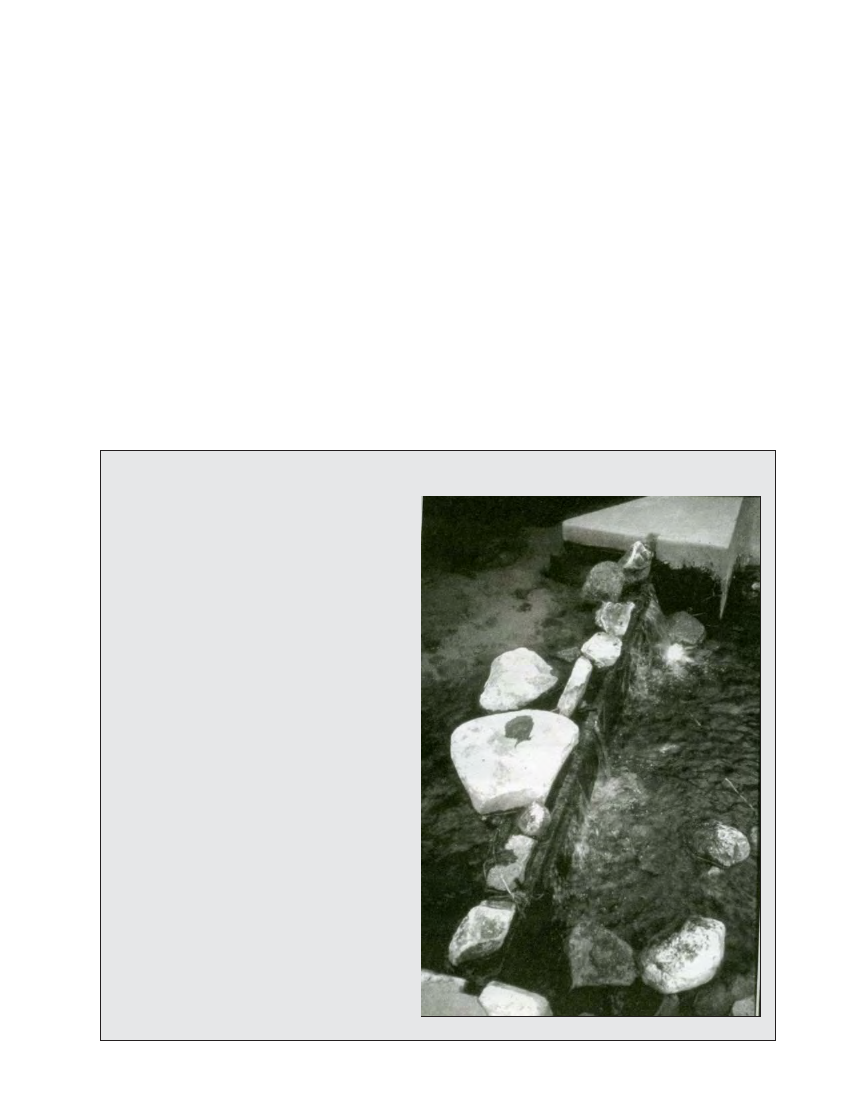
CIVIL WORKS GUIDELINES FOR MICRO-HYDROPOWER IN NEPAL
33
The bottom intake is most appropriate in locations where there
is no appreciable sediment movement along the riverbed,
because it withdraws bottom water in preference to surface
water. This type of intake was first used for small hydro and
irrigation systems early this century in alpine areas of Europe.
Worldwide practice shows that it is applicable in small rivers
in mountainous and hilly regions, where the following
conditions exist:
Steep river bed of bare rock or boulders which rarely move
(they are suitable for flow velocities exceeding 3 m/s);
Minimal bed load of sand and gravel;
Surplus flow available for continual flushing. To date only a
few bottom intakes have been constructed in Nepal, so
Nepalese farmers are not familiar with them. The design of
bottom intakes must be done carefully to avoid becoming
blocked with sediment. Bottom intakes for Thame and Jhong
micro-hydro scheme are shown in Photograph 3.9 and 3.10.
3.7.2 TRASHRACKS FOR BOTTOM INTAKE
Similar to side intakes, the trashracks of bottom intakes can
be manufactured from flat steel, angles, tees or round bars
welded together at intervals. The section chosen must be
strong enough to withstand impact by any bed load moving
during floods. Its shape is also very important, since this affects
the chances of clogging. Round bars, for example, are more
prone to clogging, because the opening in the middle is smaller
than on the top. From the point of view of clogging, the sections
listed below are arranged in the order of best to worst:
Tees
Angles
Channels
Flats
Round bars
The recommended clear spacing between these flats, angles
or bars is 6 to 15 mm and a commonly used spacing is 12 mm.
Box 3.2 Slotted concrete piers, Atahualpa and Tambomayo, Peru.
In Peru, Practical Action has been using an approach
to design of intakes which uses planks slotted in piers
perpendicular to the direction of flow of the river. Short
reinforced concrete piers are constructed at a spac-
ing of 2 metres. Each pier has vertical grooves along
its full depth. Then timber planks are inserted between
the piers by inserting the ends of planks onto the slots.
During the rainy season, one or more spans can be
removed to regulate the flow at the intake orifice and
to allow river-borne debris to flow along it without caus-
ing damage to the whole structure.
Photo 3.8 Slotted concrete piers